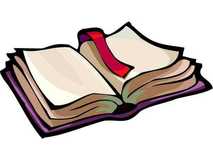| This is a continuation of Advanced Punctuation (Part 1). In Part 1, we talked about commas, colons and semicolons. In Advanced Punctuation (Part 2), we will discuss specific details and rules that you may not know about:
|
As you already know, quotation marks surround the words that are being spoken. Here are the rules for using quotation marks:
- Begin quotations with a capital letter
- Place all ending punctuation after the quote but before the closing quotation mark
- Using quotation marks in a split quotation is a bit trickier. A quote separated by the person who spoke is called a split quotation. Begin the first part of a split quotation with a capital letter, and end with a comma. Begin the second part of a split quotation with a lower case letter. Enclose both parts of the split quotation with quotation marks.
“Okay class,” said the teacher, “tomorrow we will use the computer to learn more about continents.”
“No,” my mother replied, “you cannot go to Alana’s party!”
“Wait,” she interrupted, “how did you do that again?”
- Use single quotation marks for quotations within quotations or direct speech within a text. Note that the period goes inside all quotation marks.
He said, “Karen said, ‘Do not treat me that way.’”
“Have you read ‘The Hunger Games’ yet?” he asked her.
Apostrophes (')
Apostrophes are used in the following circumstances:
1. With contractions. The apostrophe is always placed at the spot where the letter(s) has been removed.
Examples:
don't, isn't
You're right.
She's a great teacher.
2. To show possession. Place the apostrophe before the s to show singular possession.
Examples:
one boy's hat
one woman's hat
one actress's hat
one child's hat
Ms. Chang's house
NOTE: Although names ending in s or an s sound are not required to have the second s added in possessive form, it is preferred.
Examples:
Mr. Jones's golf clubs
Texas's weather
Ms. Straus's daughter
Jose Sanchez's artwork
Dr. Hastings's appointment (name is Hastings)
Mrs. Lees's books (name is Lees)
3. Where the noun that should follow is implied.
Example: This was his father's, not his, jacket.
Rules for using the apostrophe:
- To show plural possession, make the noun plural first. Then immediately use the apostrophe.
two boys' hats two women's hats
two actresses' hats
two children's hats
the Changs' house
the Joneses' golf clubs
the Strauses' daughter
- Do not use an apostrophe for the plural of a name.
We visited the Sanchezes in Los Angeles.(name is Sanchez)
The Changs have two cats and a dog.(name is Chang)
- With a singular compound noun, show possession with 's at the end of the word.
my mother-in-law's hat
- If the compound noun is plural, form the plural first and then use the apostrophe.
my two brothers-in-law's hats
- Use the apostrophe and s after the second name only if two people possess the same item.
Cesar and Maribel's home is constructed of redwood.
Cesar's and Maribel's job contracts will be renewed next year. (Indicates separate ownership)
Cesar and Maribel's job contracts will be renewed next year. (Indicates joint ownership of more than
one contract)
- Never use an apostrophe with possessive pronouns: his, hers, its, theirs, ours, yours, whose. They already show possession so they do not require an apostrophe.
Incorrect: Sincerely your's.
- The only time an apostrophe is used for it's is when it is a contraction for it is or it has.
It's a nice day.
It's your right to refuse the invitation.
It's been great getting to know you.
- Use apostrophes with capital letters and numbers when the meaning would be unclear otherwise.
Please dot your i's.
You don't mean is.
Ted couldn't distinguish between his 6's and 0's.
You need to use the apostrophe to indicate the plural of zero or it will look like the word Os.To be
consistent within a sentence, you would also use the apostrophe to indicate the plural of 6's.
Slashes (/)
A slash is used to indicate a choice between the words it separates. It is also called a slant, solidus or virgule. It is also used to separate lines in poetry.
Slash rules and usage:
- The slash can be translated as or
We’ll go to the beach if/when your brother finishes his homework.
When one has to return to the store, he/she must take the receipt.
When the knight shows up, he/she must prove his/her worth to the King.
- Slashes should not be used where the word or could not be used in its place
- There is no space between the slash and the letters on either side of it when indicating a choice
- In poetry, slashes are used to indicate a line-break. In quoted poetry, there are spaces between the slash and letters at both sides of it.
Whose woods these are I think I know / His house is in the village though;
- Using slashes to indicate line breaks in poetry is limited to only four or five lines of verse. If the verse is more than four or five lines, the poem is written out as it appears in its original form, without using line breaks or quotation marks.
Whose woods these are I think I know.
His house is in the village though;
He will not see me stopping here
To watch his woods fill up with snow.
My little horse must think it queer
To stop without a farmhouse near
(As you can see, there are no slashes or quotation marks and the lines are written like they are in the
original poem)
- Slashes are also used in internet URL’s. There are no spaces in this case.


 RSS Feed
RSS Feed